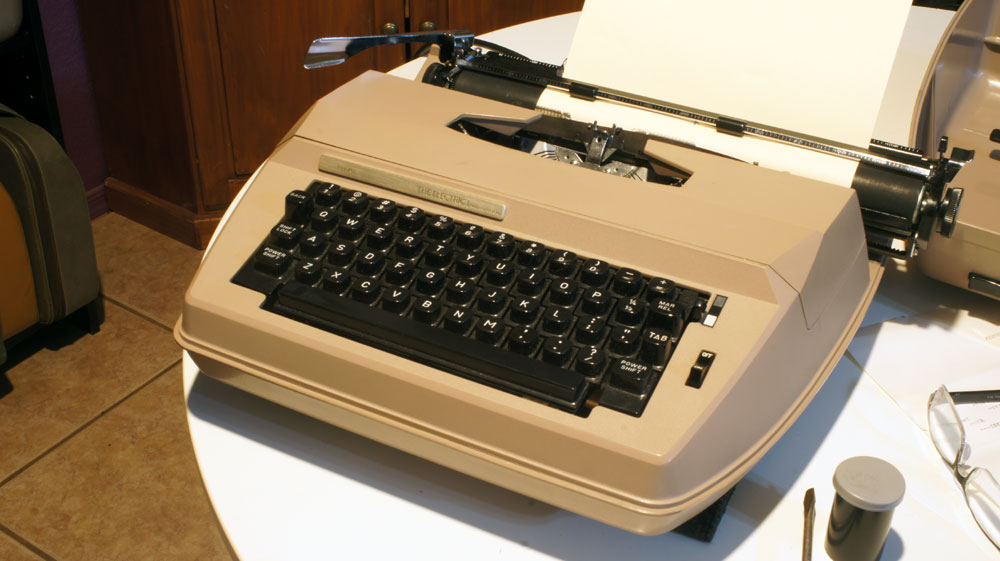
Weapon of Choice: 1982-ish Sears “The Electric 1/with correction” (Nakajima M7500).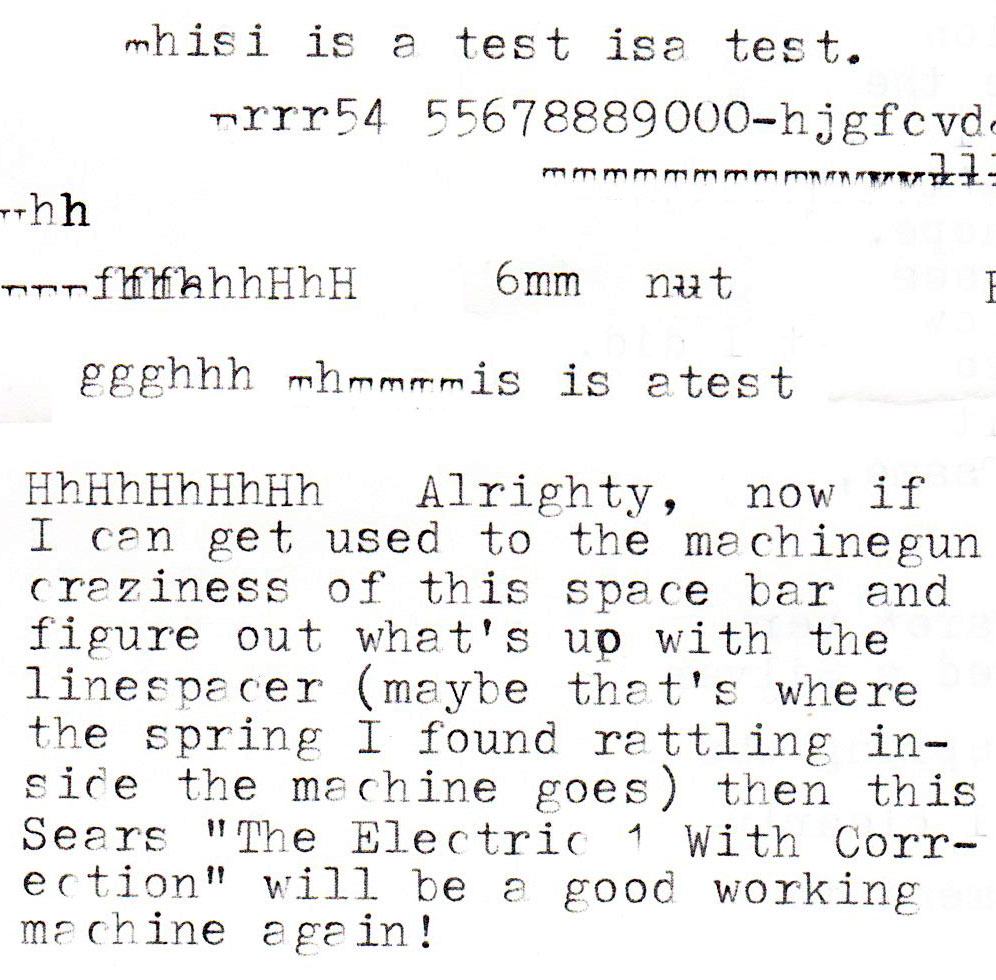
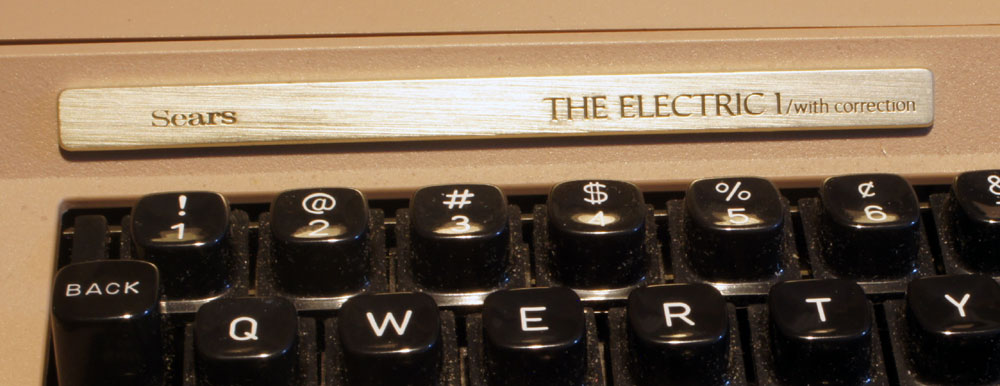
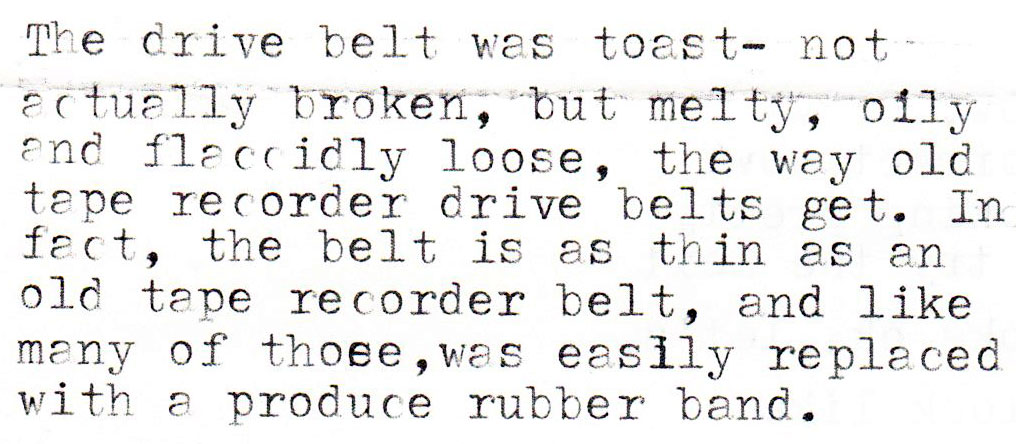
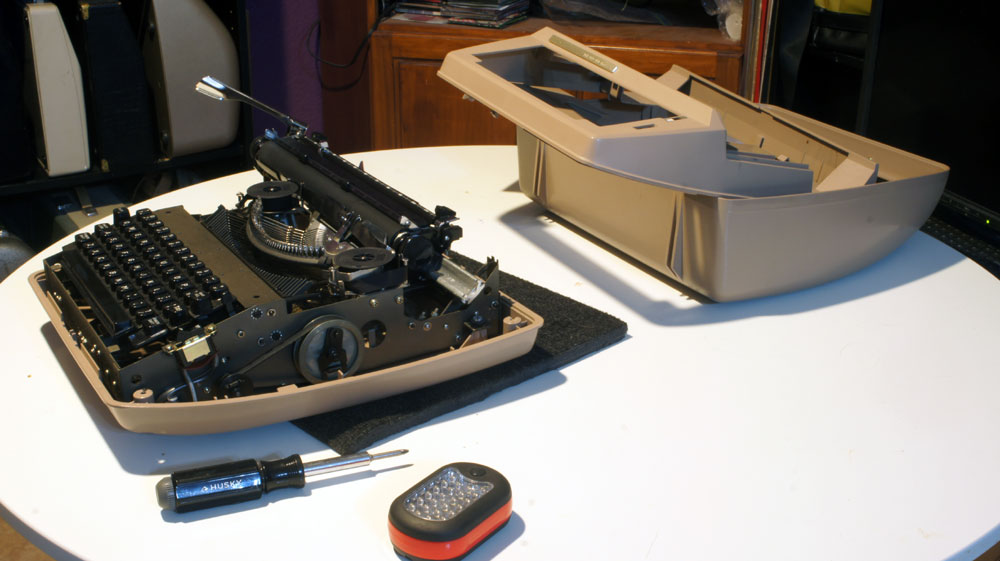
Easy-open shell, just 4 screws at the bottom.
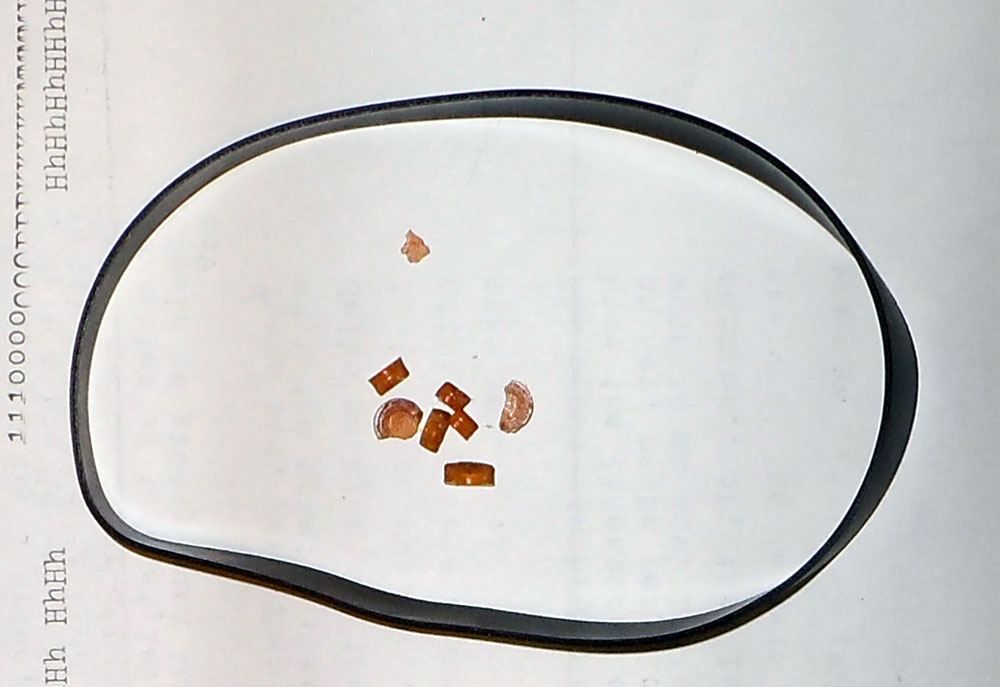
The old oily and flaccid drive belt and the remains of the shift pads.
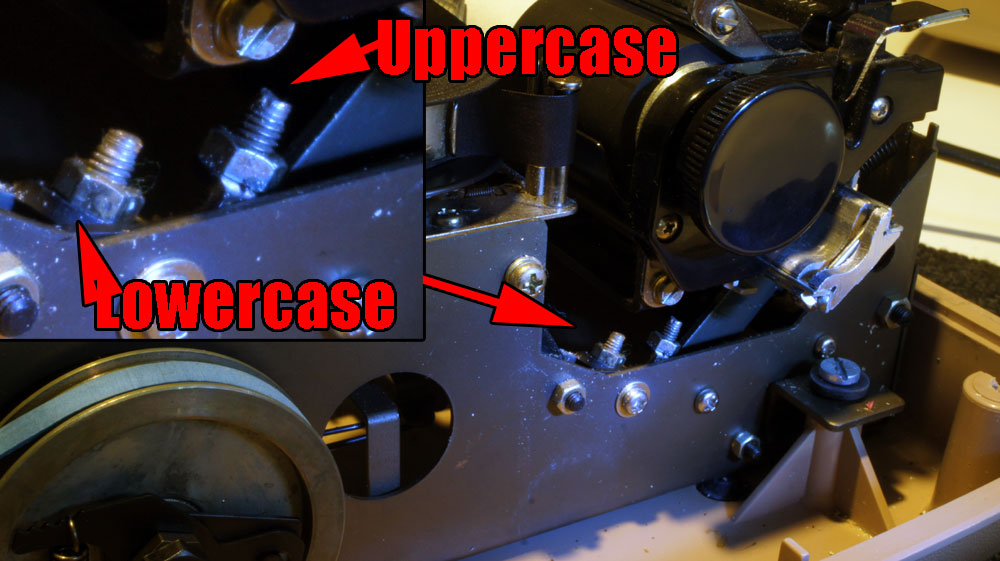

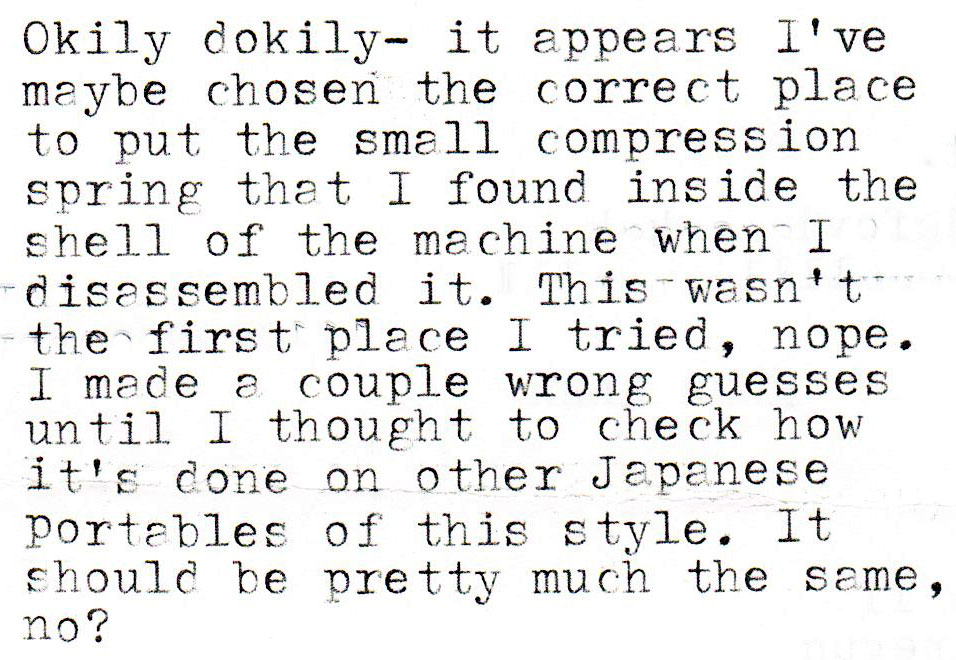
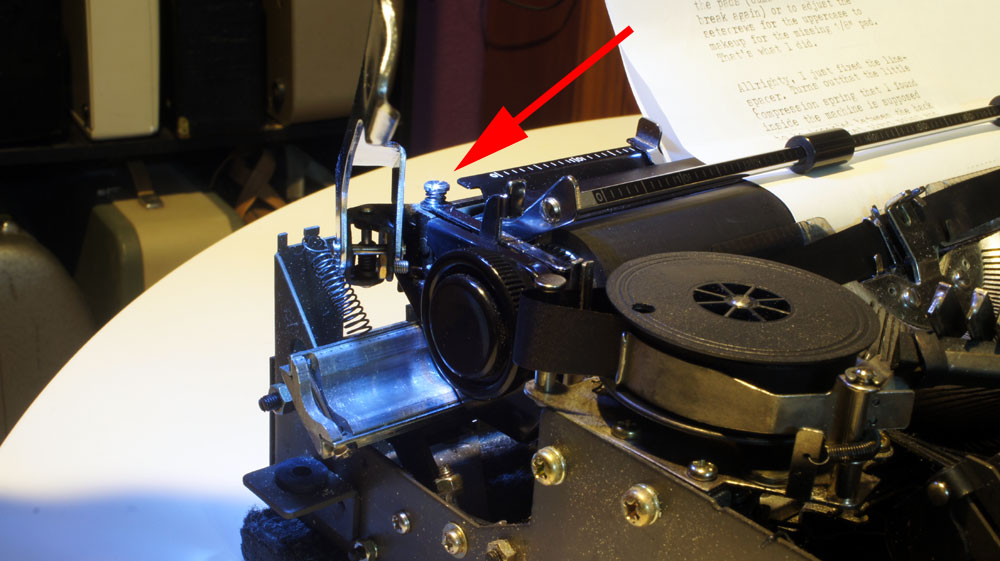
I have no idea how that little spring got loose and ended up rattling around in the machine. Pretty sure you’d have had to take out the screw first before it could come loose, but maybe someone did do that.
Replaced the belt with a couple of rubber bands from the produce aisle (used to hold bunches of asparagus together – they make great tape drive belts too).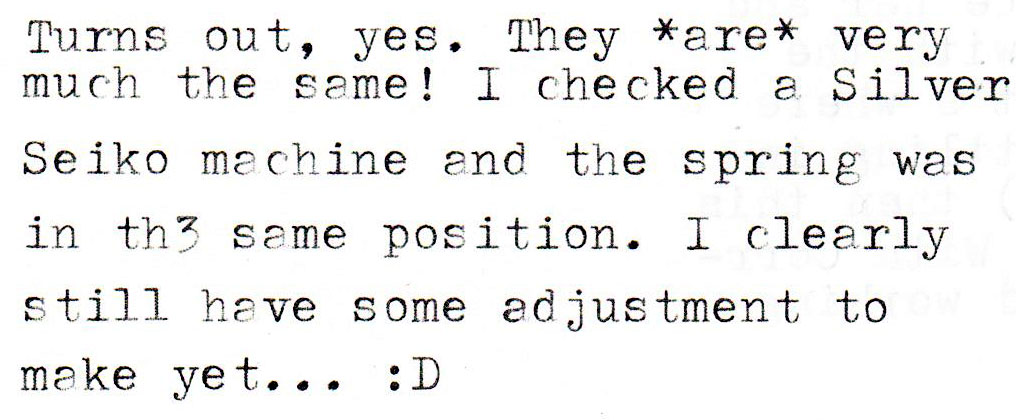
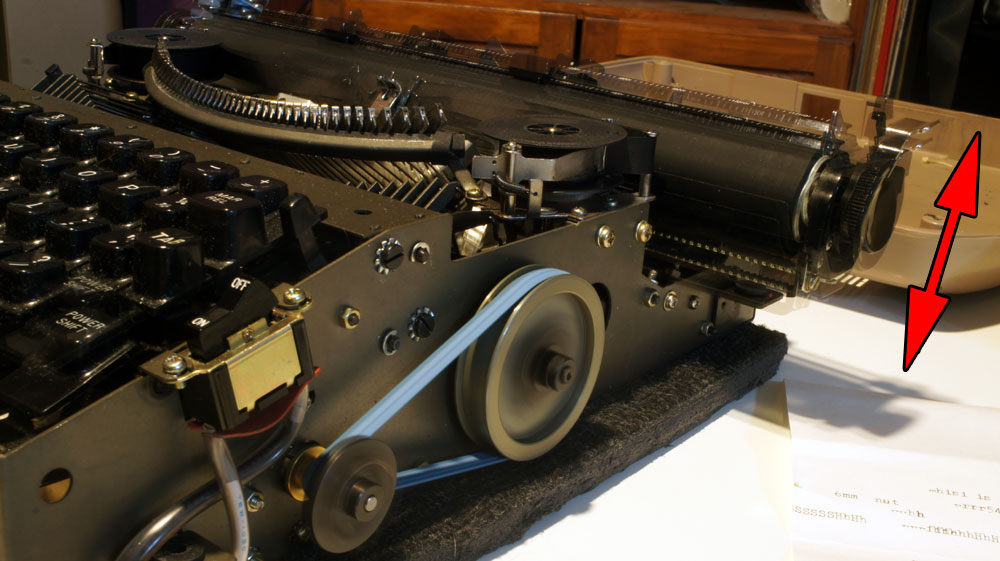
Carriage-shifted electrics in the eighties? Yes, but at least they’re powered shift.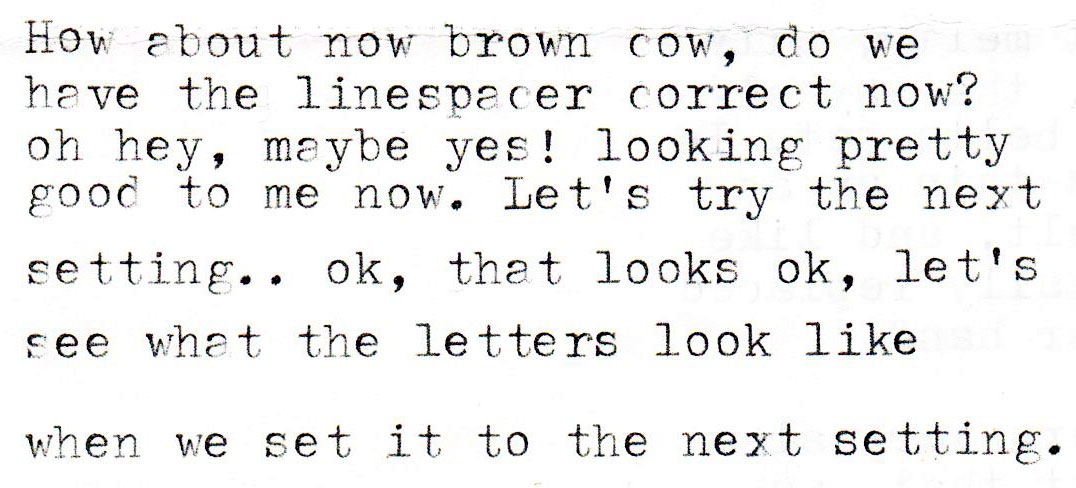
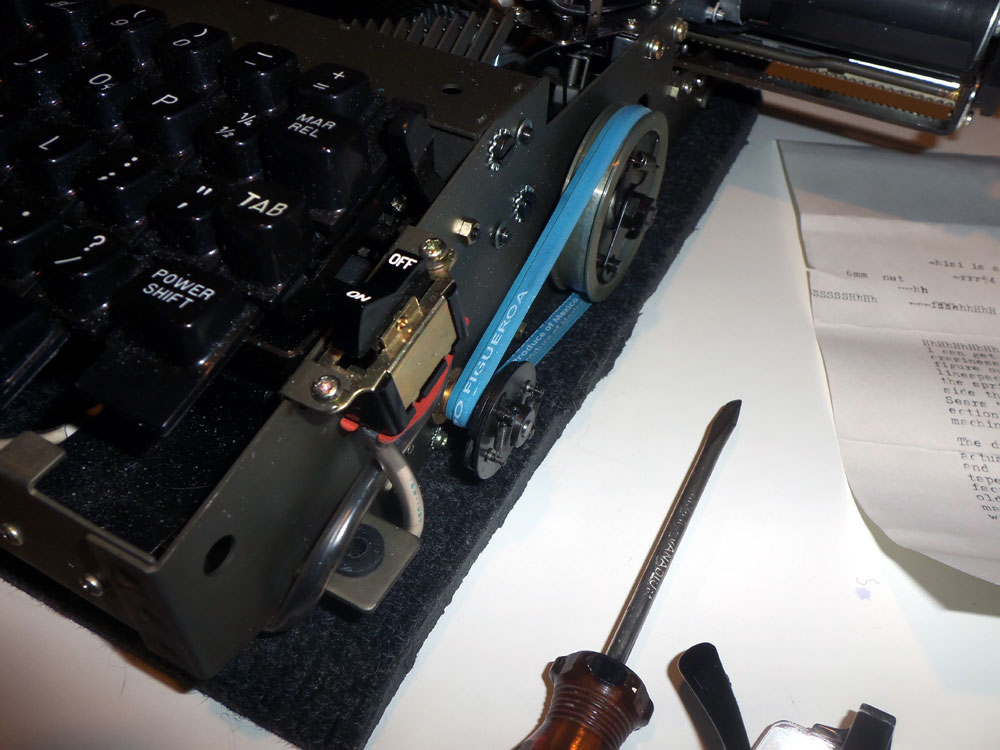
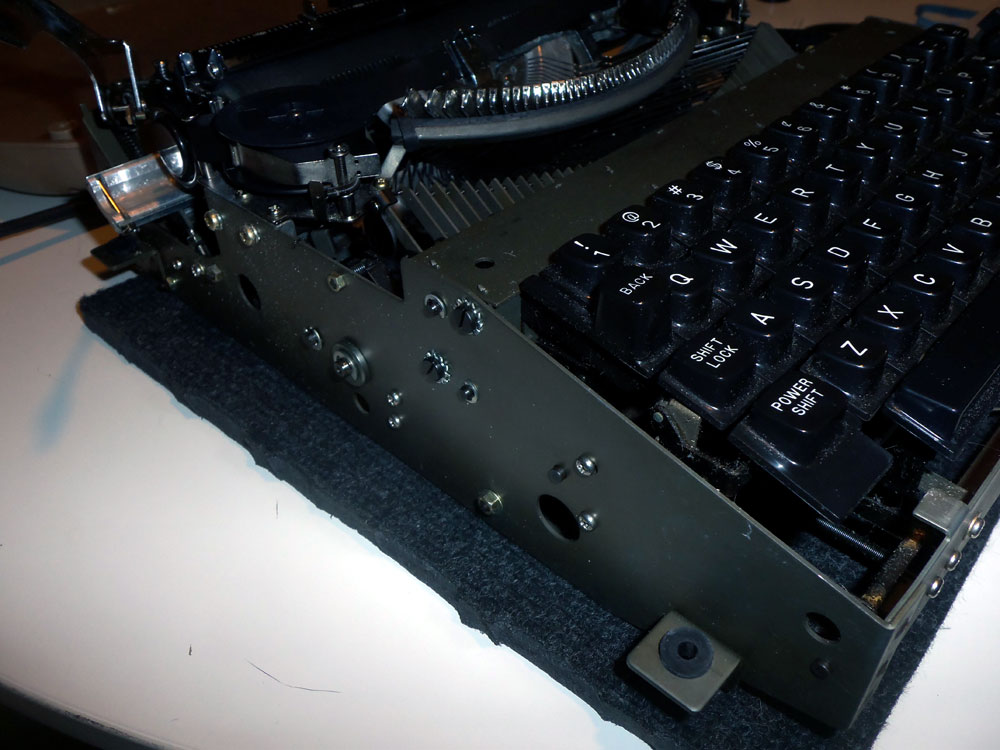

These machines are usually amazingly clean inside – they aren’t really all that old, and often haven’t been used all that much.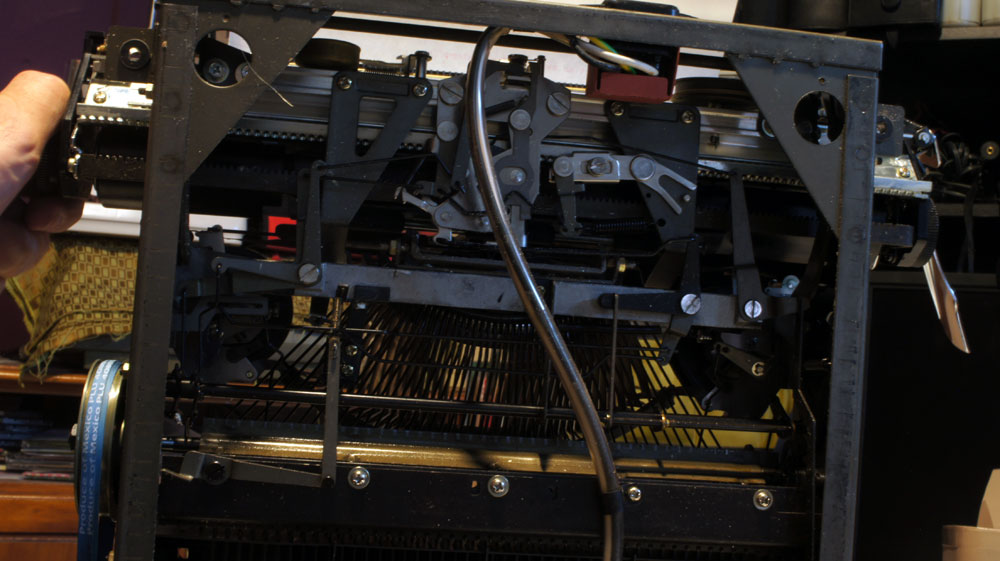
Talk about your dead-simple escapement mechanisms. This makes a 5-series look complex.
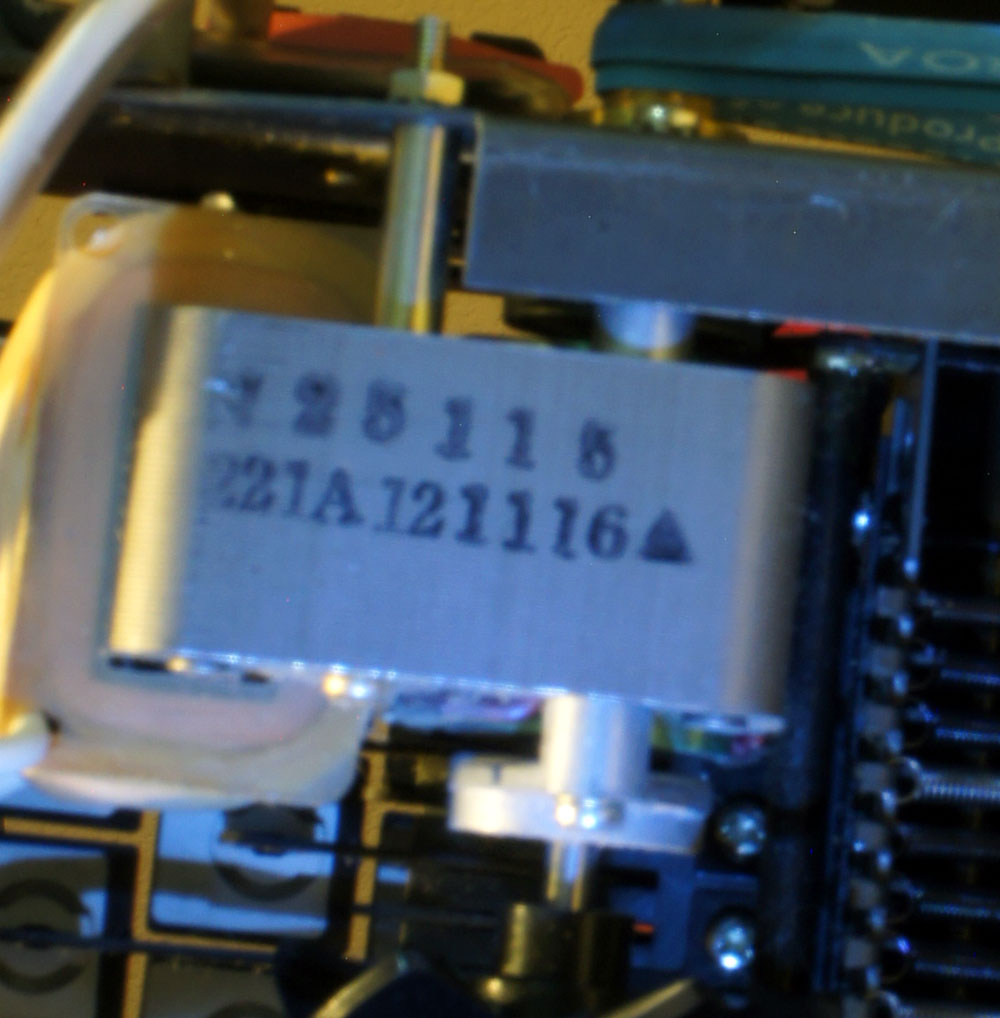
Motor markings are the only identifying text you’ll find on these.
Grant’s Nakajima 707 Gullwing, a much nicer-looking variation.
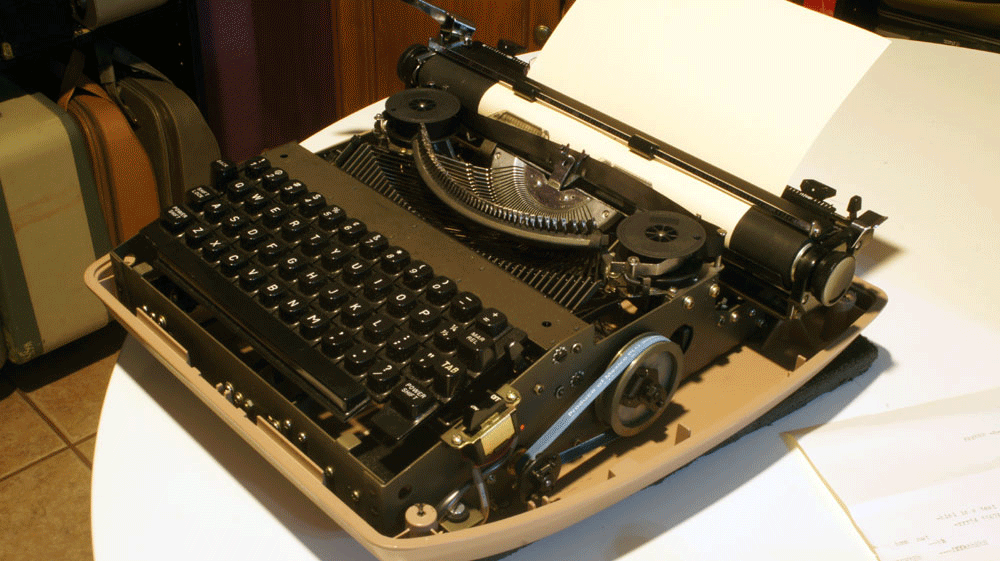
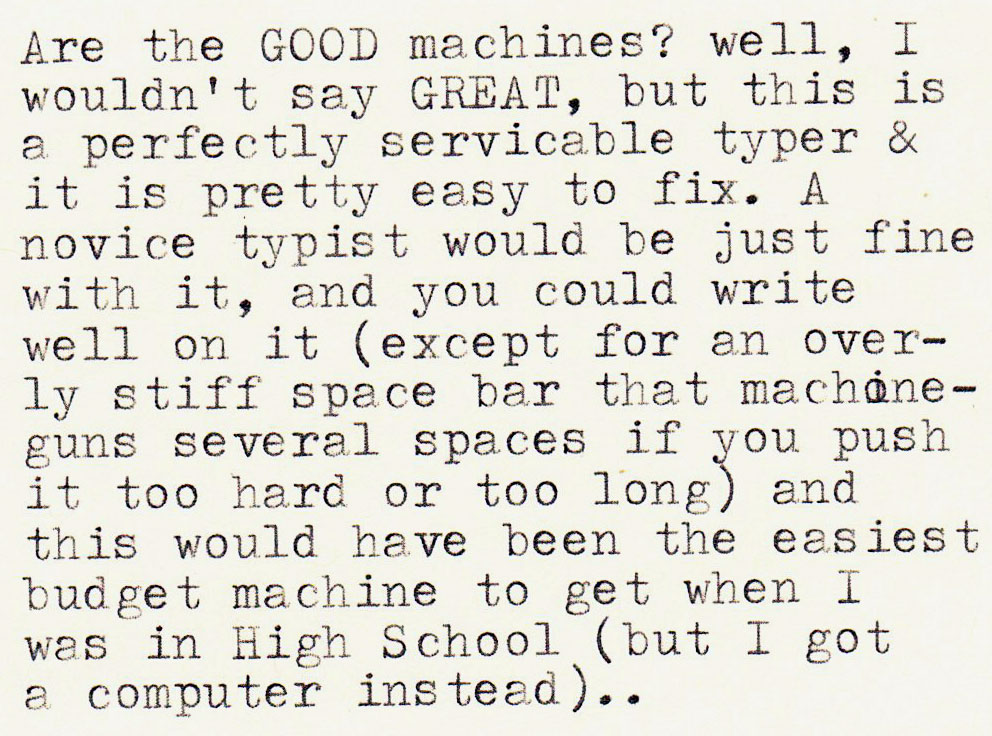
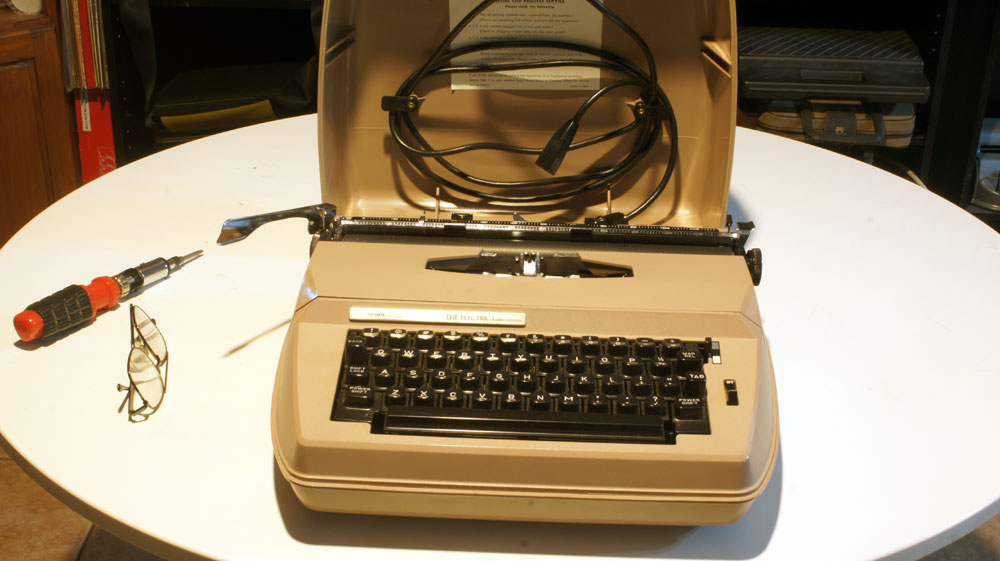
Not at all a machine I plan on keeping around, but it was free and it was fun to open up and learn a bit about these while fixing its few faults. Super-easy to work on too – absolutely not a care about screwing it up (who’d care? :D).
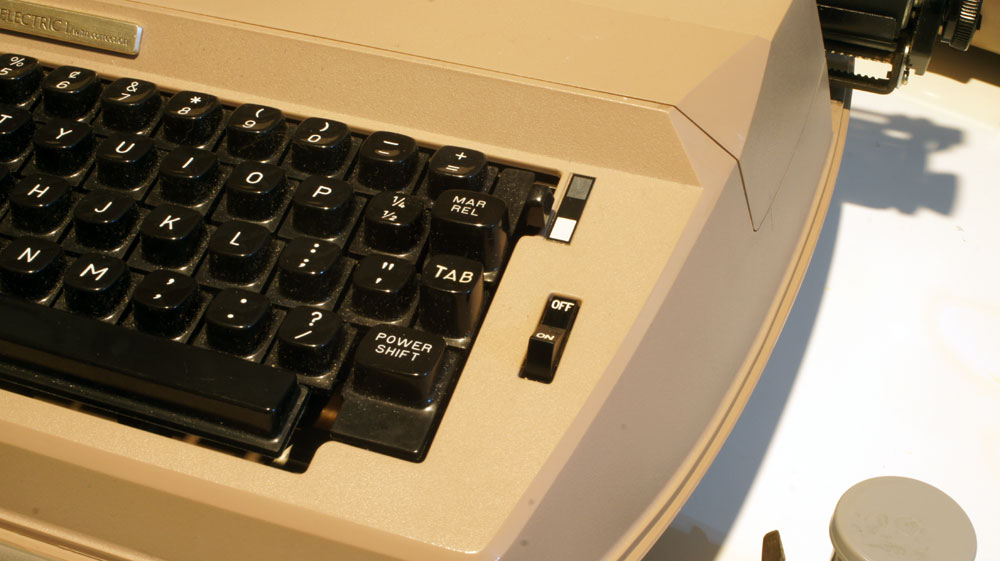
In 1980, just about every still existing typewriter gained “6-step correction” abilities by the simple expedient of outfitting them with cheap black/white ribbons from the factory, changing the bichrome label to black/white/grey rather than red/black/white and slapping “with correction” on the badge.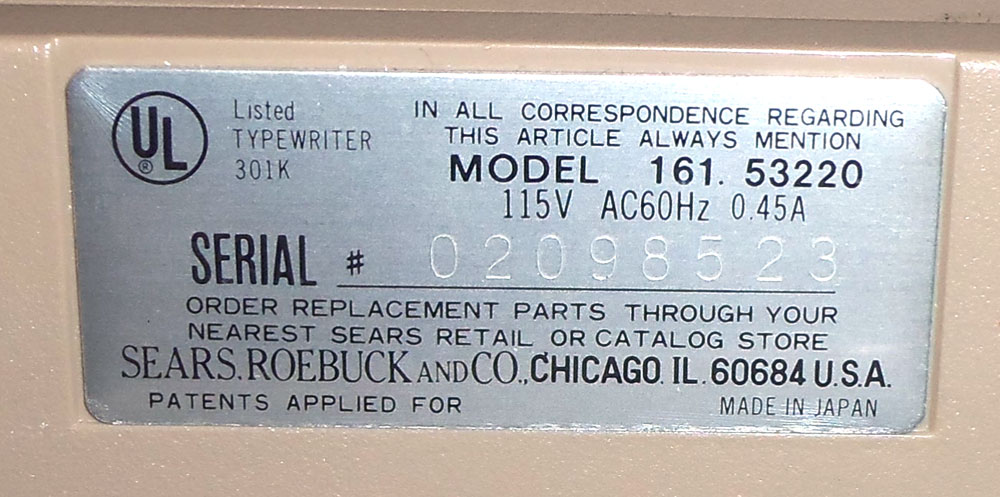
Serial numbers with leading zeroes always make me suspicious that there’s a datecode in there somewhere these days. I’ll have to make further study of these, but I feel pretty safe calling this a 1982 model.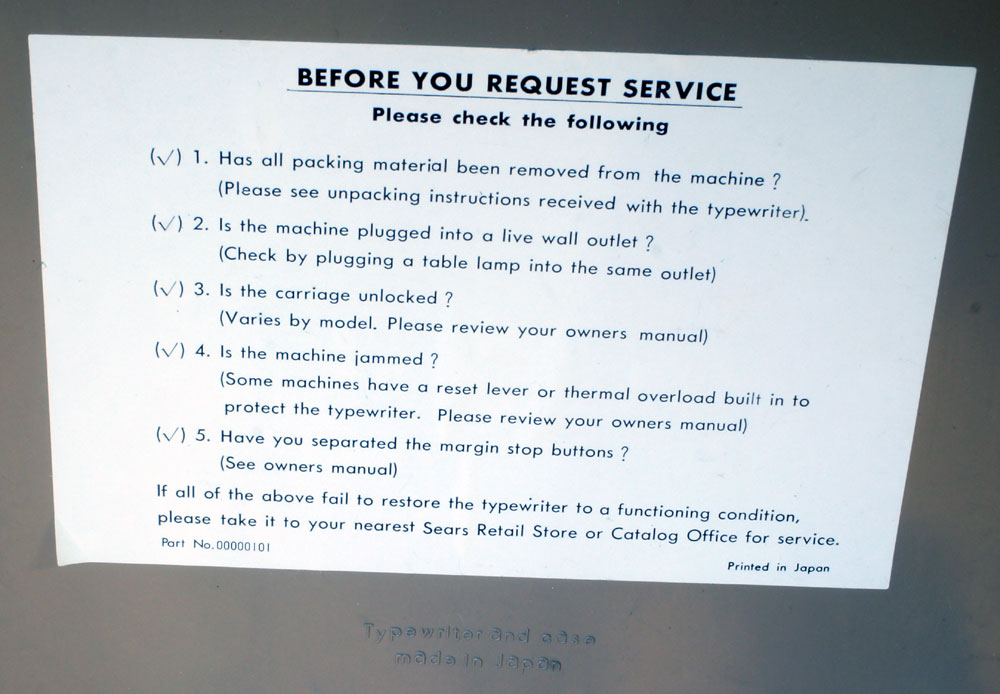

It seems Nakajima was the last quality maker of type bar machines, eh?
well, they were making a lot of them (T/A Royal and Olympia were also rebadging Nakajimas in the 80’s, probably just putting better-looking shells on the same base machines) and they were certainly simply and competently designed and executed. I wonder about the materials quality, though. metals are easily formed. I have to say that the important adjustments all had good setscrew/locknut adjustment points, though – sure beats a depression-era CD-Frame Royal in that respect.
They’re… uh.. “Perfectly Fine”, i guess. They’re an endpoint where the engineering of what a portable electric typewriter is at its most efficient, so is interesting for that clinical efficiency – but there’s not a lot of quirky ridiculousness in them to love.
Great article and pictures. On page 6 you show four setscrews for adjusting type alignment. I have this machine and the lower case letters are OK but the capital letters fade out at the bottom. I’m a newbie at this and my question is why four setscrews instead of just two? Do you have to adjust both upper case setscrews to align the uppercase letters?
yes.
Looks like a decent typewriter if someone likes an electric.
You aren’t the only one who used rubber bands on tape machines. I kept a lot of Japanese broadcast tape decks running using rubber bands of various sizes. Americans and Germans used direct motor drive. Then there was the cassette deck.
The Underwood 565 I blogged about a few weeks ago had a different configuration (motor was on the left side, for instance), but probably behaves very similarly. Certainly it has the space bar issue that yours has – if you hit it too hard it has that machine gun action. When I try to lighten up a little, oops, no space! :p But for what they are, I am sure they helped get a lot of term papers written for those that picked them up at Sears, Eatons, or any of the other stores that rebadged them!
I have never tinkered with a Nakajima electric before, but there’s lots of great information here that I will file away for future reference – and I will regard produce rubber bands with more respect in the future. The tan shell is uninspiring, but since it’s so easily disassembled, it could be a fun paint/art project.
oh yeah – highly recommend these for art/fun projects. They made millions in the 10+ years they were in constant production, I’m sure. (:
Are you sure the space bars are faulty? It could be a version of “power space bar” as I have on my Smith Corona electric. Also, did you check the “x” key if it has the repeat function like the “_” and “.” I think it is by design.
Let us say one has a Coronet 10 with a hyperactive “x” and “.” key (repeat was a feature, I’m told), and that he’s trying to make sense of the “SCM 6- and 8- series” repair manual he bought from the Typewriter database….anyone have any advice on adjusting what I’ll call the sear of those keys?
Find a piece of fairly dense foam, and cut a piece to put under the space bar. Thicker to make it stiffer, that’s how I repaired an old keyboard whose keys wouldn’t return to normal.
Do you know where I could find the manual for this machine? I have it but it didn’t come with a manual.
thank you!
Dustin